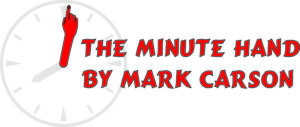Welcome to our ongoing series of short articles about watches which should only take a minute or two to read. We continue today with a brief discussion of watch crystals.
Watch Crystals
The crystal on a watch is the "glass" that covers the dial and hands.
There are basically 3 types of crystals used on watches these days. And really, only 2 of them are commonly used anymore.
- Mineral Crystal - which is a fancy way of saying hardened glass. Even though hardened, it can be scratched by contact with steel, brick, etc. so you should avoid scraping a mineral crystal against things. Advantages: low cost and better impact resistance than sapphire. Disadvantages: scratches somewhat easily and cannot be repaired (typically replaced if damaged).
- Sapphire Crystals - man made, synthetic sapphire. They are chemically and structurally the same as natural rubies and sapphires - all of which are corundum, an aluminium oxide. If a sapphire is red in color, it is a ruby. Otherwise any other color (including colorless as is used on watch crystals) is called a sapphire. So while we often think of sapphires as only being blue, this is not always the case. The jewels in a watch movement are typically man-made rubies. So outside of their red color, they are the same material as a watch's transparent sapphire crystal over the dial and hands. Advantages: very hard (9 on the Mohs scale - where diamond is 10). Disadvantages: more costly than mineral crystal (glass) and it can be chipped or shattered more easily than hardened glass. Once chipped, it can not be repaired (only replaced).
- Plexiglass - an acrylic plastic. A particular brand of plexiglass known as "Hesalite" has been used by Omega on their famous Speedmaster chronographs since they went to the moon with the Apollo astronauts Neil Armstrong and Buzz Aldrin in 1969. While it is possible to buy a new Speedmaster today with a plexiglass crystal, most new Speedmasters have sapphire crystals. Plexiglass has been used for watch crystals since the 1950s and it is highly impact resistant. You can beat on a piece of plexiglass with a hammer and while you will no doubt deeply scratch it, it is extremely tough and shatter resistant. Even with normal use (no hammering), scratches are common on plexiglass crystals. However, using abrasives many scratches can be polished/buffed out. Advantages: low cost compared to sapphire and virtually unbreakable. Disadvantages: scratches very easily and is not as transparent as mineral crystal or sapphire.
Crystals may be flat or domed (curved). If a crystal is only domed on one side, it will act as a magnifier and will distort your view of the dial and hands. A double domed (curved top and bottom: convex and concave respectively) crystal avoids distortion while still having a pleasing domed appearance and feel.
Anti-reflective (A/R) coating are often (but not always) applied to a watch crystal to help minimize unwanted reflections that make it harder to read the time. If applied to just one side, it will be coated on the bottom (inside) surface where it will avoid being scratched. A doubled coated crystal has A/R coating on both the top and bottom surfaces of a crystal. This does a better job of eliminating reflections but the top coating may be scratched as the coasting is not nearly as hard as the sapphire crystal upon which it is usually applied.
"Flame Fusion" is a marketing term used by low end watch brand Invicta for some of their crystals. This appears to just be a thin layer of sapphire applied on top of a piece of mineral glass. It is generally considered to be a low cost, inferior product compared to a true sapphire crystal.
Another, historically interesting, crystal material was a piece of natural quartz which was used on the famous "Marie Antoinette" watch made by Abraham-Louis Breguet (the most famous watchmaker of all time). This is probably the most famous watch of all and was not even completed during the lifetimes of either Marie Antoinette or Breguet. To read more about this fascinating watch, pick up a copy of the book "Marie Antoinette's Watch" by John Biggs - Available on Amazon.
Times up! That's all for today. Stay tuned to the Hawaii Jewelers Association website for the next installment of "The Minute Hand" with your host, Mark Carson of Mark Carson / Individual Design watches.

